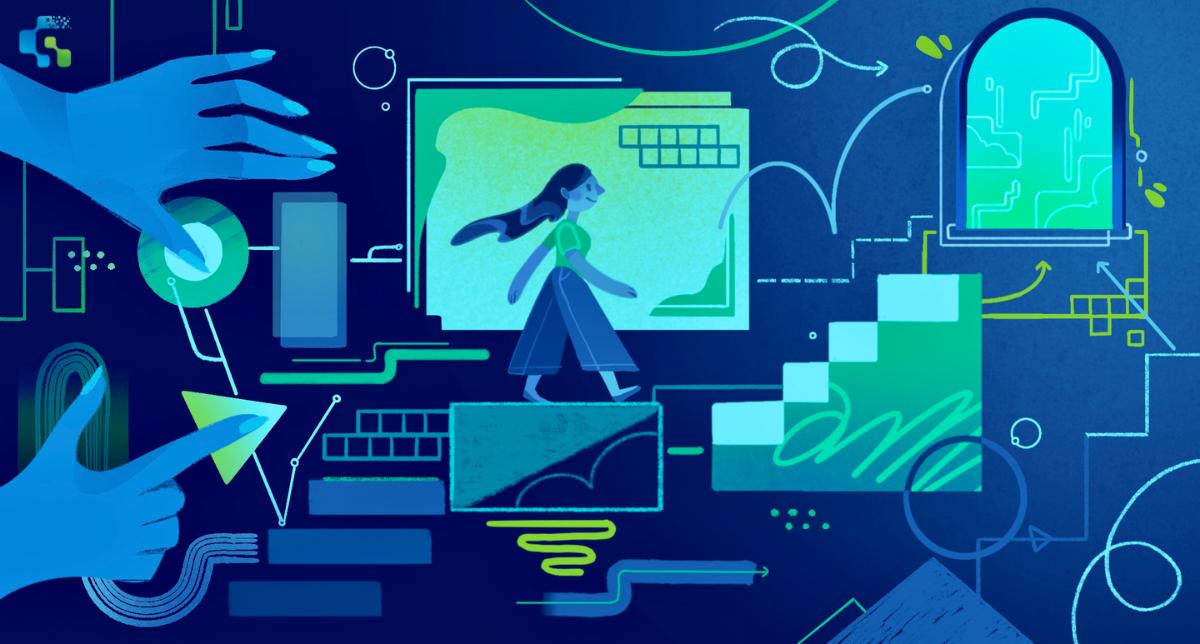17 Famous Female Scientists Who Changed the World
Despite making up over half of the global population, women represent just31.7% of researchers worldwide.This underrepresentation highlights the...
3 min read
 Adrian Ghira
:
Feb 29, 2020 9:21:00 AM
Adrian Ghira
:
Feb 29, 2020 9:21:00 AM

With four generations now present in the workplace, employers are faced with an unprecedented number of challenges when it comes to bridging the information technology gap.
Here’s what you need to know about this unique blend of individuals, the differences between them, and how to implement new technology in the workplace:
Baby Boomers: Born between 1946 and 1964
What Defines Them: As a result of the baby boom of the late ’40s to early ’60s, boomers entering the workforce faced stiff competition. For this reason, they often maintain a driven, “hard work is the key to success” workplace persona.
Learning Style: Having grown up without an abundance of technology, Baby Boomers prefer classroom settings and/or hands-on workshops that encourage participation and feedback. Detailed e-mails, long-form online manuals and training instructions are also favoured.
Generation X: Born between 1965 and 1980
What Defines Them: Unlike their boomer predecessors, the competition for post-secondary education and entry-level positions was not so tough. Work/ Life balance is essential to Gen Xers, who maintain a “work hard, play hard” outlook, and who bring a self-sufficient, and flexible presence to the workplace.
Learning Style: Computers and the internet were increasingly accessible for this generation, making them more technologically adept. For this reason, tech-based learning will come more naturally to Gen Xers, with independent learning preferred.
Millennials (Generation Y): Born between 1981 and 1996
What Defines Them: Millennials are the fastest-growing segment in the workforce. Achievement-oriented, Gen Y will often seek out new challenges at work, thrive on feedback and are very family-centric (often prioritizing family over work).
In the Workplace: The first generation to really grow up with technology, Millennials are extremely tech-savvy, relying on it for job performance. They are also very team-oriented, benefitting from tech-based learning in a group environment and appreciate the flexibility provided by remote, cloud-based technologies.
Generation Z: Born between 1996 and 2012
What Defines Them: Only just starting to hit the workforce, Generation Z is known for their entrepreneurial spirit and competitive nature. They’re also known for taking their careers very seriously and are motivated by job security.
In the Workplace: Generation Z are considered “digital natives” – or the most-tech savvy generation in existence. For this reason, they often prefer authenticity derived from face-to-face communication. Extremely independent, Gen Zers also favour learning on their own over a team setting.
Tips For Bridging the Multi-Generational Technology Gap
1. Cater to Varying Tech Abilities
As we mentioned, Millennials and Gen Zers have grown up with technology. And according to a study conducted by CompTIA, these younger generations prefer a quick approach to new technology implementation (typically mobile), vs. the more thorough, user-friendly approach favoured by Baby Boomers (usually on desktop).
As a solution, experts recommend adopting a Microlearning strategy, which employs “bite-sized” snippets of information to keep users engaged and can be used across a variety of devices. It also allows for personalized training, which encourages both collaboration and social learning as well as self-directed learning – all within a flexible environment.
2. Use a Variety of Communications Strategies
Keep generational differences in mind when it comes to rolling out new technology. As not every generation embraces technology the same way, share any news, training instructions or updates across a variety of platforms and formats.
For instance, whereas Baby Boomers are used to long-form content (i.e. training manuals and documents, instructions by email, etc.), the following generations typically prefer the bite-sized pieces of information or snippets mentioned above.
3. Employ Multi-Generational Mentoring
Having been in the workforce for decades, both Baby Boomers and Gen Xers have a keen sense of leadership and organizational process. This is ideal for younger generations as having an understanding as to where they fit in the business process may help them make better use of collaborative technology.
Conversely, younger employees can help older generations adopt new forms of technology (i.e. team-based platforms, social media, online conferencing. etc.) more easily.
4. Take Your Largest Segment Into Account
With Millennials now making up the majority of the Canadian workforce, employers are urged to adopt a Millennial-friendly approach to technology integration. Here again, this means encouraging online, collaborative and team-based approaches to new tech and workplace flexibility (remote learning, learning on your own schedule).
Of course, it’s essential to cater to the needs of all generations within the workplace. However, Millennial-preferred learning strategies should be kept top of mind, as these methods are likely to be favoured by the majority of employees.
For the latest in technology news, tips and advice, visit our blog or take advantage of the many free resources available on our Tech Tips page.
Sources: Firm of the Future, Ceridian, The Balance Careers

Despite making up over half of the global population, women represent just31.7% of researchers worldwide.This underrepresentation highlights the...

Learn more about these major workplace productivity killers and how to overcome them.

In celebration of Women's History Month and International Women's Day, it is important to take a moment to reflect on and honor the incredible...